Celestron's new telescope is a step away from their current line-up
Their first smart telescope, Celestron has just announced their latest intelligent offering, the Celestron Origin at CES 2024, but will astronomy purists take to it?

On January 8 2024 Celestron proudly unveiled the Celestron Origin at the world's biggest tech show, the Consumer Electronics Show (CES) 2024, held in Las Vegas.
If you love to embrace new tech to (arguably) enhance your skywatching enjoyment and astrophotography results, the Celestron Origin could be the intelligent telescope you've dreamed of. We'll level with you though, if you're an out-and-out astronomy or astrophotography purist, Celestron's newest AI-assisted arrival probably isn't for you.
Get ready to embark on an incredible journey of exploring the universe without worrying about choosing the right gear or mastering complicated techniques. Be prepared to start saving up, though, as the level of simplicity and wow factor this telescope delivers has a high price tag.
Who are Celestron?
Simply put, Celestron is the world's leading telescope brand. Established in 1960, they have continuously developed and evolved their products, striding forward with technological advances and responding to ever more challenging user demands to create the widest range of astronomy gear available. Perhaps more importantly, they strive to make astronomy and astrophotography accessible to users of all skill levels.
We've reviewed countless Celestron telescopes such as the Celestron NexStar 4SE, NexStar 8SE, Inpire 100AZ, Astro Fi 102, binoculars including the Nature DX ED 12x50 SkyMaster 12x60 and even the EclipSmart Solar binoculars. We can't wait to get our hands on the Celestron Origin for ourselves in the second quarter of this year.
What is Celestron Origin?
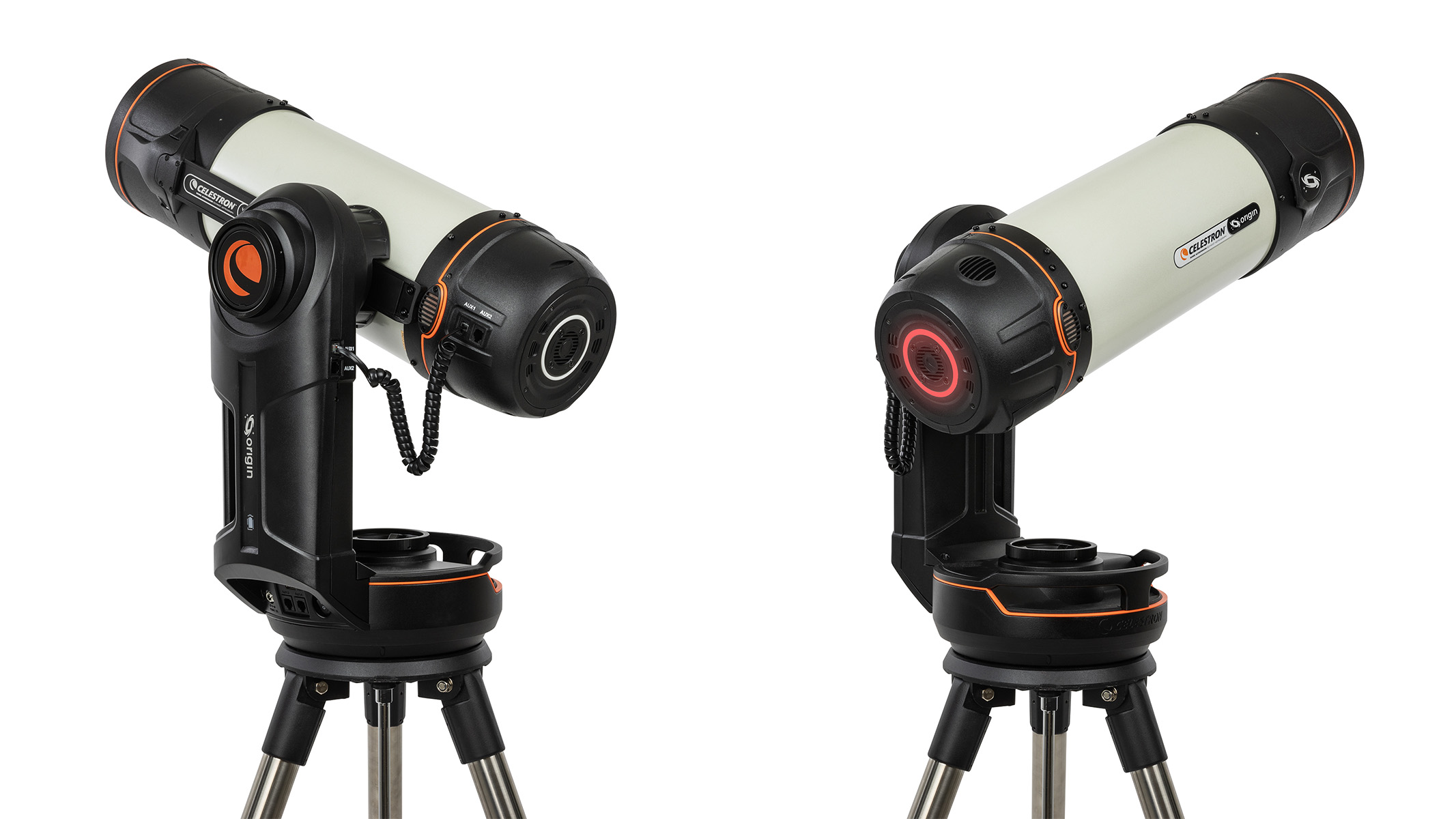
The Celestron Origin is billed by the manufacturer as the world's first intelligent home observatory. But what does this mean?
Well, after a decade in development, Celestron has created an intelligent telescope meets astrophotography rig. They have combined sophisticated optical and astronomical technology with an accessible and user-friendly interface. This means both seasoned and beginner astronomers can quickly and easily view and photograph the wonders of the night sky like never before — like those images shown in the gallery below.
Breaking space news, the latest updates on rocket launches, skywatching events and more!
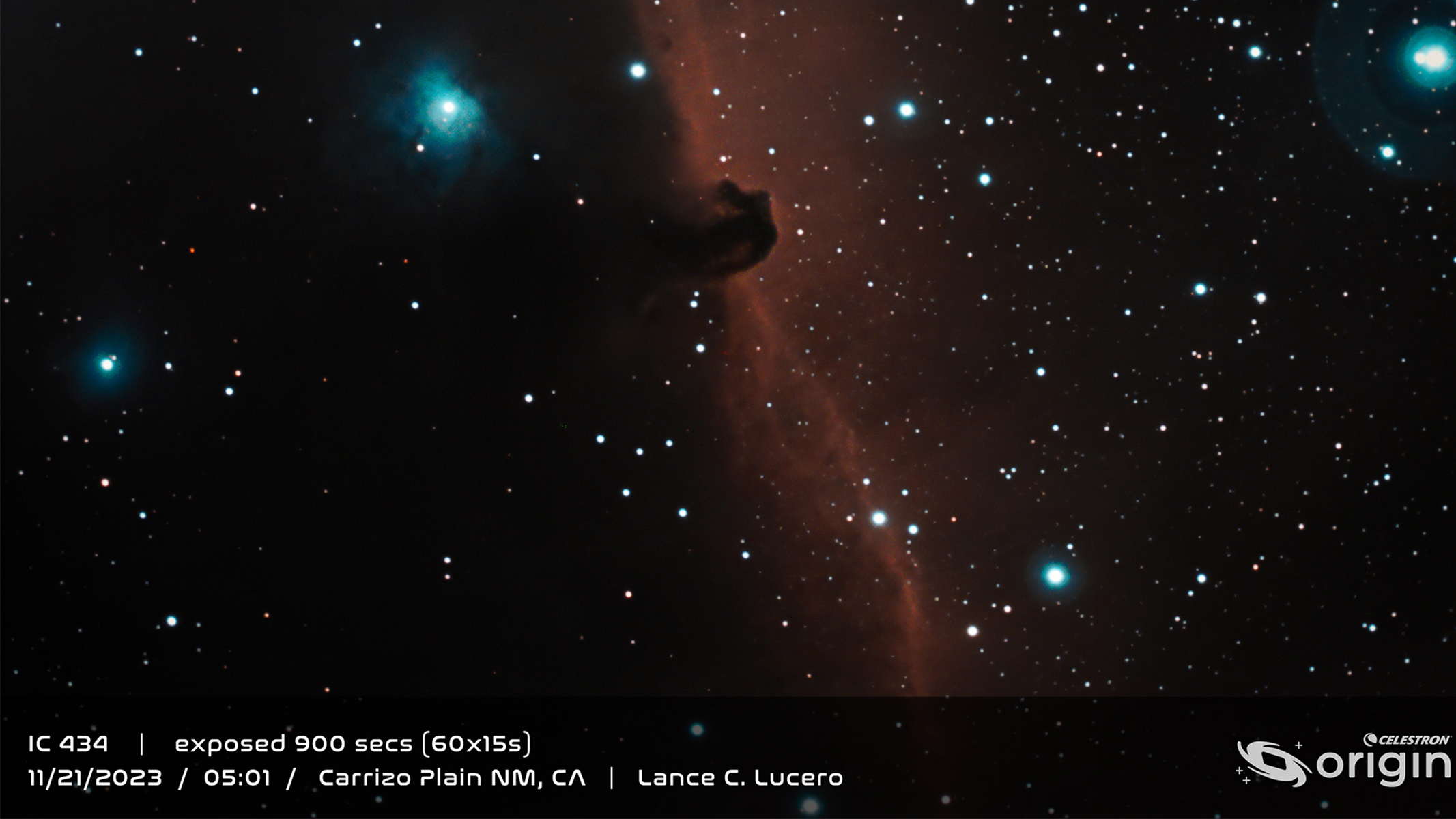
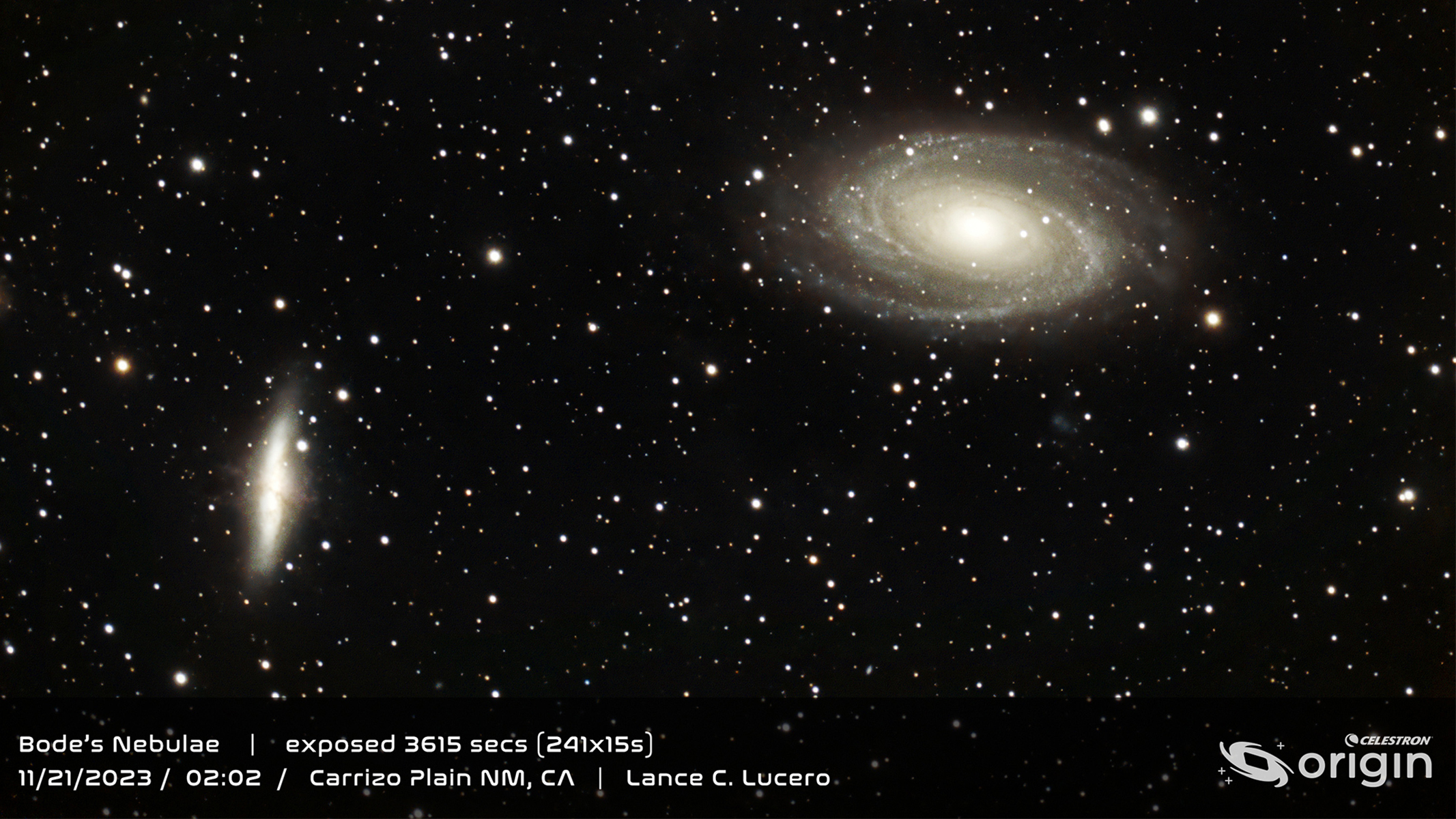
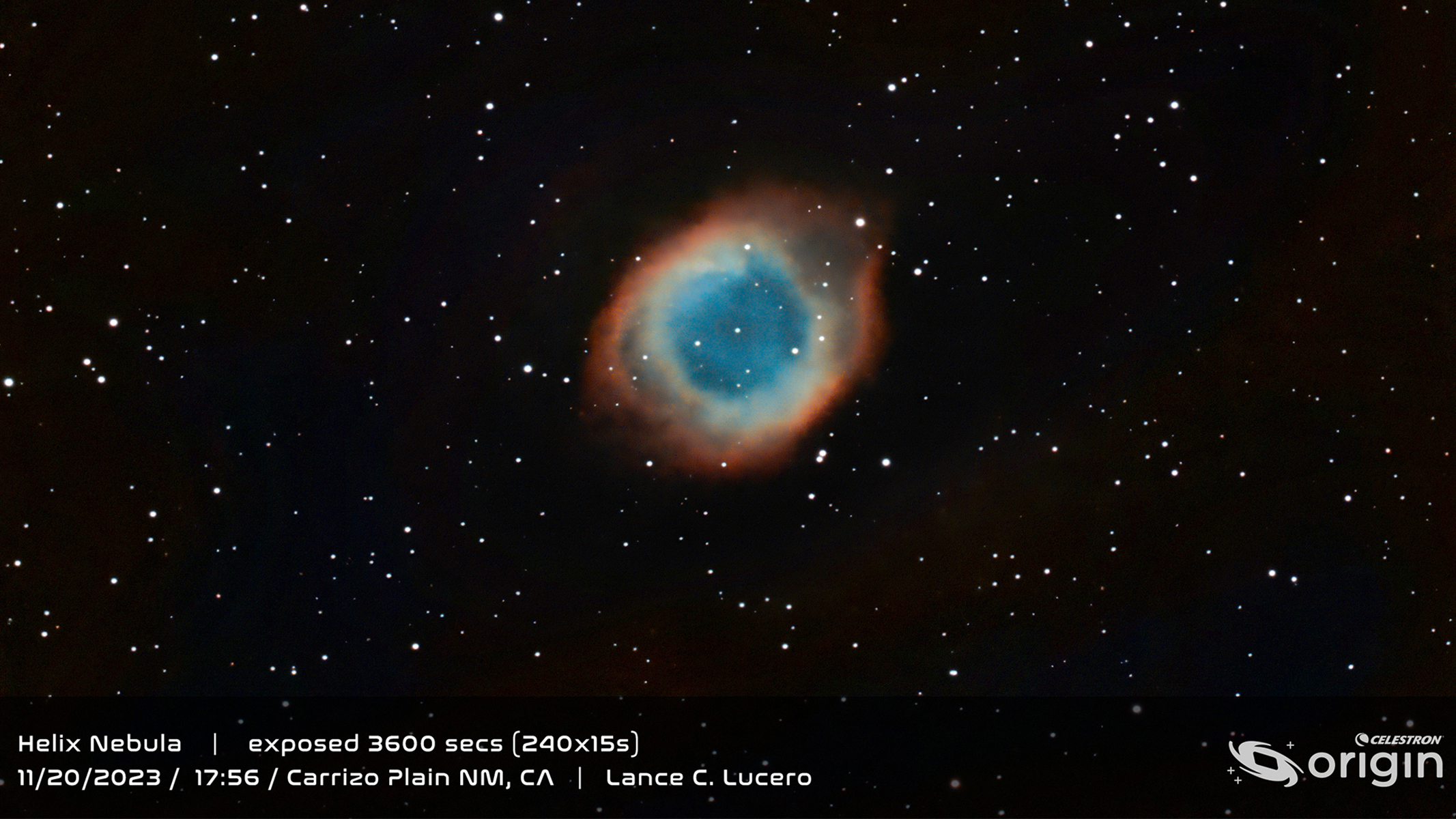

All of the frustrating chores and annoying niggles often associated with telescope astronomy and astrophotography are erased. That's right — no more tricky alignment procedure, fiddly focusing with cold fingers, eyepiece swapping, object identifying and tracking, the Origin has it all under control.
Optical design: Rowe-Ackermann Schmidt Astrograph (RASA)
Aperture: 6-inches (152 mm)
Focal length: 335mm
Focal ratio: f/22
Total kit weight: 41.6 lbs (18.87 kg)
Mount type: Computerized GoTo altazimuth mount
CMOS Image Sensor: Sony IMX178LQJ, color, back-illuminated
The onboard camera, combined with AI-powered image processing, can shoot, stack and display real-time views of celestial (even deep space) objects to your device of choice — whether that be your Smartphone, tablet, TV or Smart projector. You can capture raw images directly from the sensor, too.
You can even schedule deep-space viewing while you sleep. Tell the Celestron Origin what you want to see, and it will capture and save the images for you to discover when you emerge from your slumber.
How does it work?
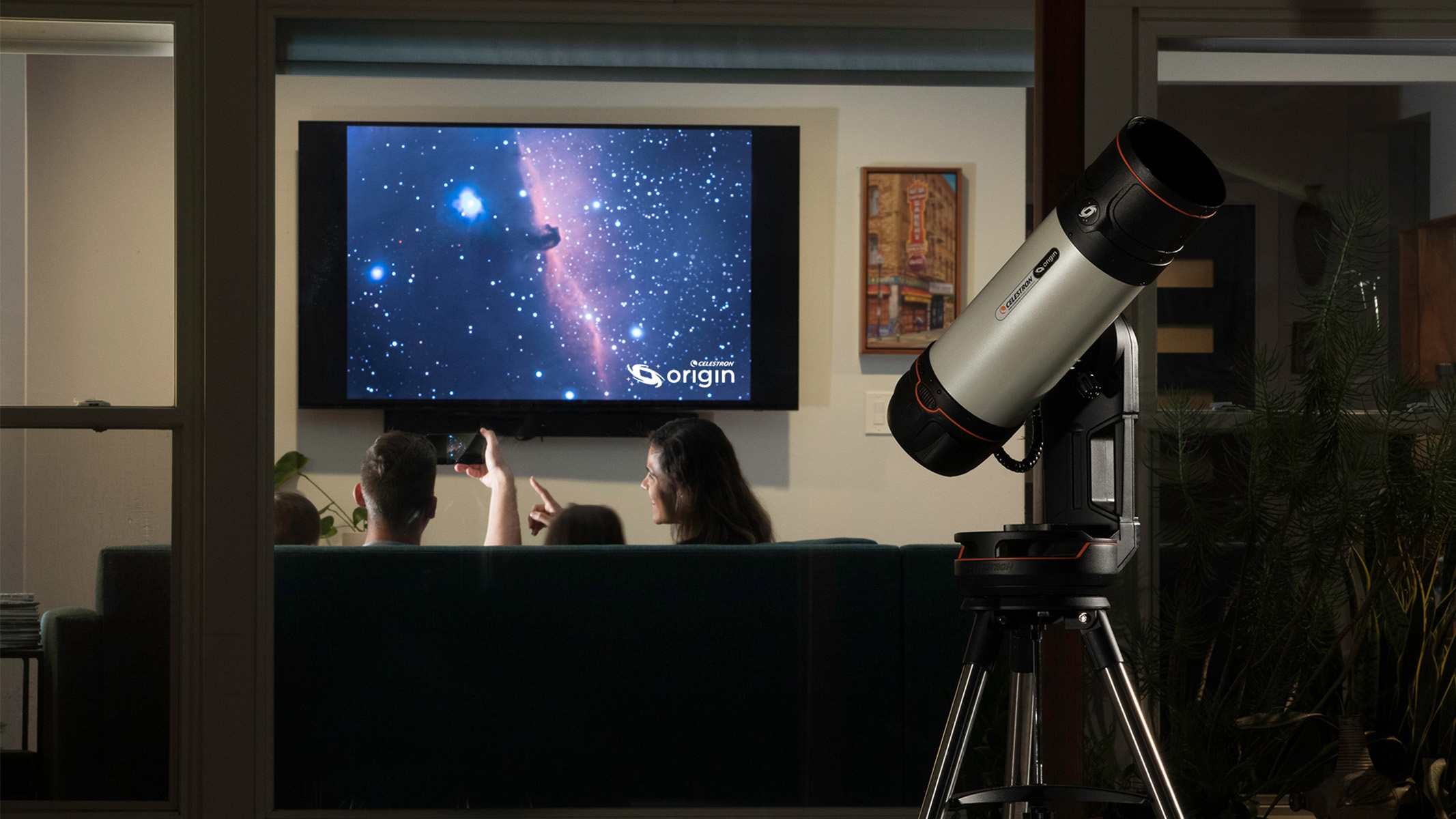
Celestron's patented Rowe-Ackerman Schmidt Astrograph (RASA) design unusually places the imaging sensor at the front of the telescope tube. This results in a super-fast f/2.2 system with an extraordinarily wide field of view.
When we say fast, we mean seconds. No more waiting in the cold and dark with a Thermos while your astrophotography set-up captures hours of long exposures, which then, needless to say, need stacking and editing post-shoot.
This is tech that is used by private companies and Governments to track satellites to defend them from space junk, and you'll soon be able to have that level of patented, observatory-grade engineering in your own home.

The 41.6 lbs (18.87 kg) unit is self-contained and battery-operated (you can plug it in too) and is controllable with the iOS or Android-compatible Celestron Origin App. Pop the Celestron Origin in your backyard, tell it what you want to see, and watch effortlessly as it, with the help of a Raspberry Pi 4 Model B computer, finds, focuses on and tracks your desired celestial objects. The battery is billed to last for more than six hours, which, given the capabilities of this scope, is more than enough time for a triumphant night of AI-assisted observing and imaging.
When can you get our hands on it?
You can pre-order the Celestron Origin now, and it will be available globally in Q2 this year. That doesn't give you much time to save the $3999 you'll need to spend to get one.
Though that price initially appears jaw-droppingly high, if you haven't already invested in 'traditional' astronomy and astrophotography gear and want to produce dazzling images right away, the Celestron Origin still probably works out much cheaper than starting to build your gear from scratch. You won't need to buy one of each of the best cameras for astrophotography, one of the best telescopes, the best lenses, a star tracker, not to mention the countless astrophotography accessories you'll find yourself wanting over time to perfect your night sky imagery.
Keep an eye out for our upcoming hands-on review, where we will see for ourselves whether the Celestron Origin can produce the results we think it will.
If you're a traditionalist who wants a more hands-on approach to skywatching and astrophotography, check out the best telescopes and best cameras for astrophotography.

Tantse Walter is a writer, photographer and travel enthusiast that has spent over a decade facilitating global adventurous expeditions. She loves getting into the nitty-gritty of sourcing and planning itineraries, getting out and about in nature, and admiring the night sky.
